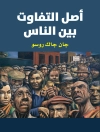Community organizers build solidarity and collective power in fractured communities. They help ordinary people turn their private pain into public action, releasing hidden capacities for leadership and strategy. In Collective Action for Social Change , Aaron Schutz and Marie G. Sandy draw on their extensive experience participating in community organizing activities and teaching courses on the subject to empower novices to think like an organizers.
Inhaltsverzeichnis
PART I: OVERVIEW What is Community Organizing? What isn’t Community Organizing? PART II: HISTORY AND THEORY The History of Community Organizing in America Saul Alinsky’s Model of Organizing Campaign vs. Community Organizing: Storytelling in Obama’s 2008 Presidential Campaign PART III: CASE STUDIES The Industrial Areas Foundation and ‚Organizations of Organizations‘; with M.Warren ACORN and ‚Door Knocking‘ Groups; with H.Swarts An Independent Organizing Group PART IV: KEY CONCEPTS Overview: Core Organizing Concepts Public vs. Private Relationships Leadership Power One-on-One Interviews Issues Tactics or ‚Actions‘ Strategy Conclusion: Limitations of the Neo-Alinsky Organizing Model
Über den Autor
AARON SCHUTZAssociate Professorand Chair of the Department of Education Policyand Communication Studies at the University of Wisconsin-Milwaukee, USA.
MARIE G. SANDYformer Deputy Director of Wider Opportunities for Women in Washington DC, USA, where among other efforts, she worked with organizing groups around the nation in fights over welfare reform.












